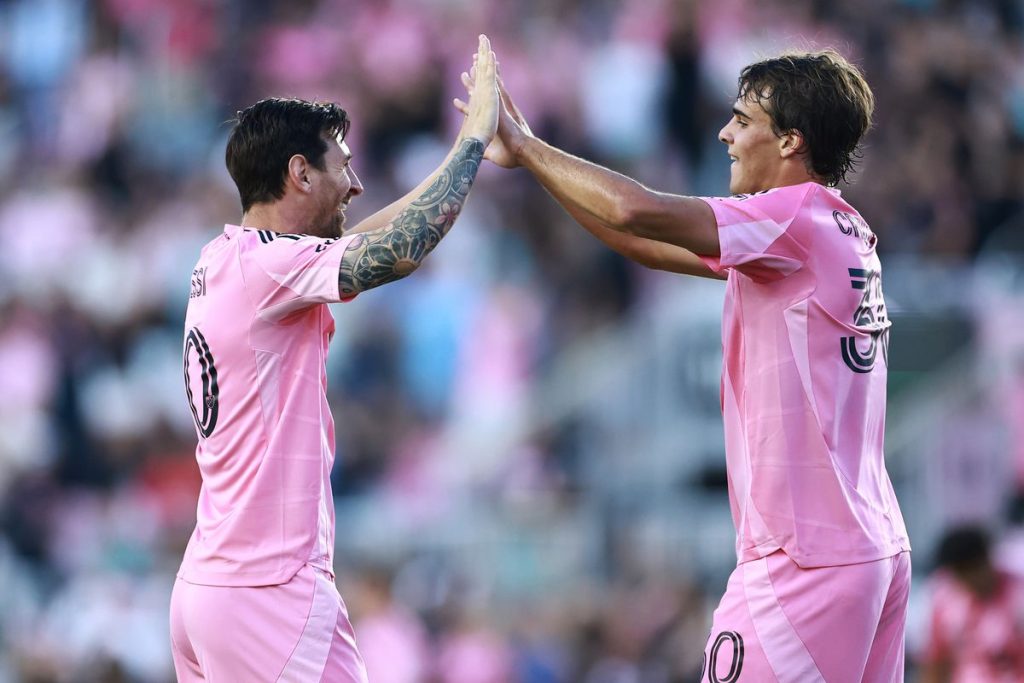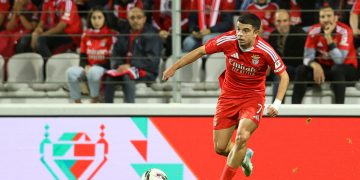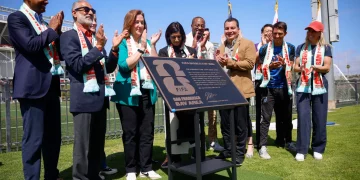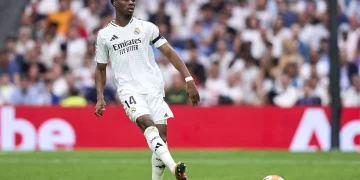Messi’s Positioning in Beckham’s Hybrid System
When Inter Miami took the field against Al Ahly in the much-anticipated opener of the expanded international club series, all eyes were predictably on Lionel Messi. Yet what unfolded was more than a showcase of individual brilliance—it became a defining tactical statement. In the opening 15 minutes, Messi’s role revealed a new hybrid approach engineered under David Beckham’s ownership vision and Tata Martino’s touchline precision. MLS teams have long battled reputations of tactical predictability, but Messi’s positioning in this match demonstrated a shift that could ripple across the league.
Operating as a false nine drifting deep into the right half-space, Messi didn’t merely float between midfield lines; he orchestrated the tempo. Beckham’s vision for Inter Miami has leaned heavily into fluidity, emphasizing controlled chaos rather than rigid formations. In this match, the team toggled between a 4-3-3 in possession and a compact 4-4-2 mid-block when defending. Messi’s freedom enabled this duality. As he dropped, he attracted defenders, unlocked lanes for overlapping fullbacks, and gave Sergio Busquets a second passing triangle. This structure gave Inter Miami superior control in central zones—a rarity for many MLS teams traditionally focused on wing play or vertical counters.
What set this strategy apart was how Inter Miami used Messi not just as a creator but as a decoy and spatial manipulator. Against a side like Al Ahly—disciplined, athletic, and tactically sharp—such subtleties are essential. Messi’s deeper position forced Al Ahly’s midfield line to stretch, breaking their pressing rhythm. Martino’s design wasn’t about dominating possession, but rather about distorting Al Ahly’s shape through asymmetric positioning. MLS teams watching this encounter witnessed a masterclass in how a single player, used with deliberate tactical intelligence, can unlock not just goals but entire system advantages.
Al Ahly’s Pressing Traps and Tactical Discipline
If Inter Miami played the conductor, Al Ahly came in with a disciplined orchestra of their own. The Egyptian champions didn’t just show up to defend—they implemented pressing traps that rattled even experienced players. Using a modified 4-2-3-1, Al Ahly executed high-touch pressure points across Miami’s double pivots. They baited short passes into Busquets and Gomez, then collapsed with vertical and lateral pressure—classic cues seen in CAF Champions League intensity.
The midfield trio of Dieng, Magdy, and El Solia acted in sync, alternating between zonal shadows and aggressive man-marking. Their goal wasn’t possession—it was transition. In several sequences, they pressed Inter Miami’s center backs into one-touch errors or forced passes to the touchline, where the pressing traps intensified. Their fullbacks played higher than usual, trusting their center backs to absorb Messi’s movement and overloading wide areas where Inter Miami had space but no time.
Perhaps the most impressive element was their compactness after losing the ball. Al Ahly’s counterpress resembled top-tier European standards. Whenever they lost possession in advanced positions, three or four players would immediately collapse around the ball. This suffocated Inter Miami’s outlets, preventing quick counters that are typical of MLS play. Their pressing discipline offered a blueprint for how underdog teams—or less resourced squads—can neutralize star-driven, possession-focused sides.
Al Ahly’s execution showed that defensive intelligence can travel across continents. For MLS coaches looking to adapt high-energy systems to combat increasingly international rosters, this game provided evidence that structure and timing often outweigh individual brilliance.

A Record-Setting Crowd and the Cultural Fusion of Fan Identity
Beyond tactics, the opener stood out for its electric atmosphere and cultural confluence. Attendance soared past 73,000, smashing MLS preseason records and creating one of the loudest neutral-site environments in North American club history. The crowd wasn’t just large—it was deeply diverse, representing a fusion of MLS newcomers, lifelong Latin American fans, and passionate North African supporters.
The Miami fan base—still relatively young but heavily influenced by South American football traditions—brought their drums, songs, and tifo culture. But it was Al Ahly’s traveling support that truly made the occasion feel global. Chants of “Ya Ahly” echoed across the stadium, met with pink-and-black drumlines and Spanish-language cheers. This meeting of worlds wasn’t just a spectacle—it was a new footballing identity forming in real time.
For MLS, which has long tried to carve a distinctive identity between American sports culture and international football authenticity, this game offered a working prototype. The cross-cultural fan experience added to the emotional intensity on the pitch. Players responded with greater urgency, knowing that every misstep or genius moment would be met with a roar or a gasp. Coaches noted post-match that the atmosphere changed the pace of play, forcing players to adapt to the crowd’s rhythm.
Sponsors, too, took note. Jersey activations, bilingual signage, and regionally customized broadcast coverage hinted at how far the league has come—and how far it can still go. With Miami now viewed as a gateway between hemispheres, future club friendlies and tournament games may increasingly aim to replicate this kind of fan engagement, not just in stadium design but in cultural outreach.
A Tactical Blueprint for MLS Moving Forward
This match won’t be remembered just for its scoreline—it’s now a tactical case study. For MLS coaches and analysts, the opener between Inter Miami and Al Ahly answered several urgent questions: Can MLS teams compete tactically against disciplined, experienced international clubs? Yes. Can they do so by imposing their style rather than retreating into defensive shells? Again, yes—with smart adaptations. Most importantly, it revealed a way forward: fluid formations, positional freedom for stars, and controlled off-ball aggression.
The hybrid system Martino used—balanced between verticality and possession—could become a tactical standard. Teams without Messi can still replicate the structure: use an intelligent playmaker to draw space, invert fullbacks to offer width-to-midfield transitions, and maintain tight vertical spacing to reduce counterattack risk. Meanwhile, Al Ahly’s pressing serves as a template for lower-budget clubs to punch above their weight by emphasizing coordinated aggression, game-state control, and spatial compression.
For the league, the next step will be integrating these tactical lessons into broader development models. MLS NEXT academies and affiliate clubs should study this match frame by frame. The styles showcased weren’t just about names—they were about systems, reactions, and trust in preparation.
Conclusion: More Than a Match—A Message
The Inter Miami vs Al Ahly opener was more than a game—it was a declaration. Tactical nuance, high-octane pressing, cultural vibrancy, and professional execution all combined into a match that may shape how MLS views itself in relation to the global game. For a league still striving for global credibility, this was a moment of arrival—not through dominance, but through identity.
It showed that tactical excellence doesn’t require European addresses. That global fans can rally behind MLS narratives if the product on the pitch matches the passion in the stands. And that when the brightest stars align with the sharpest systems, football in America becomes more than just watchable—it becomes essential viewing.


































Discussion about this post